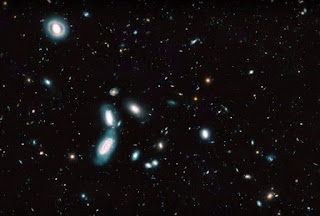A great "history book" of galaxies in a single image. It is the mosaic of the distant universe produced by the Hubble Legacy Field Team using 16 years of observations of a reduced sky area - on which the Hubble space telescope lingered in the complex for a good 250 days: more than on any other region of the sky
It is a mosaic of the remote universe. A spectacular image that is the result of the far-reaching shooting photographer who documents 16 years of observations by the 29-year-old Hubble space telescope. The international team involved in the Hubble project composed it.
The amazing image is called the Hubble Legacy Field. And it's not just any image. It contains about 265 thousand old galaxies up to 13.3 billion years - therefore dating back to just 500 million years after the Big Bang. But if you think that these numbers are enough to define the amazing image, well, you are wrong. You still have to consider the range of wavelengths that helped create it: from ultraviolet to near infrared, capturing all the features of the assembly of galaxies over time, with the most distant ones characterized by an apparent brightness that does not reach a ten-billionth of that perceptible to our eyes.
And it's not over, there's the icing on the cake - the one left after the telescope's birthday, celebrated last April 24th: the mosaic was obtained by combining the most important deep field surveys (deep field, in English) that Hubble has never completed, the observations of the most remote universe, where the primordial galaxies lie, the most interesting ones to measure the size and age of the universe and test the theories about its origin. That of 1995, in which Hubble captured several thousand galaxies never seen before. The spectacular Hubble ultra deep field of 2004, in which it detected almost ten thousand galaxies in a single image. To finish with the extreme deep field of 2012, obtained in turn by combining ten years of observations of a portion of sky within the original Hubble visual field. In short, a "history book": the largest and most complete galaxy in the universe.
A portrait created from an album of images obtained from nearly 7500 individual exhibitions - the first of the Hubble Legacy Field series - which includes the collective work of 31 Hubble programs carried out by different research groups, and which confirms Hubble the time machine for excellence in astronomy.
"Now that we have expanded on previous surveys, we are gathering many more distant galaxies in this which is the largest dataset of its kind ever produced," says Garth Illingworth, leader of the team that created the mosaic. "It is an image destined to remain unsurpassed until the future space telescopes such as the James Webb are launched".
Mintclick
Subscribe to:
Post Comments (Atom)
Patriotic Marines that became models
Today is a model, but 10 years ago it was with the Navy, one of the most elite US troops, Though he has now returned to fashion an...

-
There are many places on our planet for which science has no explanation. Places that look magical or as belonging to another world. ...
-
With these players in the Real team, neither Zinedin Zidan fails to make the turn for Madrilenët, who are doing one of the weaker seasons ...
-
The exciting story between two birds becomes viral. They died a few days away from each other after they had lived together. It's n...




No comments:
Post a Comment